Sunnmøre, and has a cand.scient. degree from NTNU in analytic organic chemistry, with a major in organic geochemistry. Myhr joined SINTEF Petroleum Research (then known as IKU) in 1986, since when she has held a number of positions in the company, as laboratory manager, programme manager and section manager...
SINTEF search
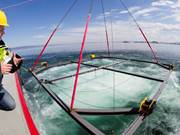
...expertise and that of her colleagues is in great demand after what to all appearances is sabotage of the Nord Stream 1 and 2 gas pipelines. Full remote control of a subsea operation is far more demanding than carrying out repairs using divers. However, suitable systems are available. Aune and her colleagues...

Norway and Europe,” says Nils Røkke, Chairman of the Board of the European Energy Research Alliance (EERA) and Executive Vice President Sustainability SINTEF Energy, one of Europe’s largest independent research organisations. The Northern Lights project is part of Norway’s full-scale CO2 capture and return...
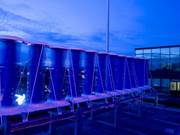
...generation in cities and other built-up areas. But what is the best way of exploiting wind energy in such areas? Research scientists at SINTEF have been reviewing state-of-the-art technologies and have studied projects elsewhere in the world where wind turbines have been installed both on and in buildings....
Archive of recent activities
...was performed during last week at the CO2 Field Lab. About one tonne of CO2 was injected at 20 meters depth and the movement of the gas was monitored. Chief scientist Erik Lindeberg at SINTEF, and Svein Staal Eggen from Gassnova inspects the monitoring of the CO2 during the shallow injection which was...

In September Lise and Vigdis attended the 2016 International Hydrogen Conference, supported by among others our collaborating international project partner I2CNER. This conference, held only every fourth year, is considered one of the premier topical meetings on hydrogen effects in materials. It is...
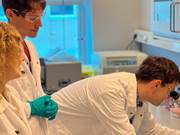
...“In practice what we’re doing is hacking into a cell so that we can reverse its wiring and enable it to focus on maintaining its DNA”, says Visnes. Photo: SINTEF Standard A standard approach to treating disease is to prevent biological functions from damaging the body’s tissues. This is normally done...
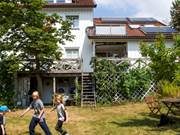
...published by SINTEF Building and Infrastructure. A project group made up of social scientists and engineers set themselves the goal of boosting their knowledge about solar heating systems in Norway. It wanted to find out who was installing the systems, why they did so, and what their experiences with...
...examples and should not be used directly in the analysis. To make the prototypical scenarios relevant for the installation in question, these have to be adapted. This is done through a process of extending the prototypical STEP diagrams by incorporating installation specific information and behaviours...
Release Notes for MRST 2024b
Highlights of MRST 2024b The new release comes with some small improvements in functionality, minor bug fixes and changes to maintain compatibility with newer versions of MATLAB. The largest change in this release is organisational, as MRST has now been fully migrated to GitHub as a single, easy to clone...

Elite Sports Research at NTNU and researchers at SINTEF, the Norwegian ski manufacturer Madshus intends to use new sensor technology to advance the individual tailoring of skis for both elite athletes and recreational skiers. From the left: Svein Ivar Moen, Haakan Nordbäck and Peter Blom from Madshus during...
EU’s efforts to generate fossil-based electricity and hydrogen incorporating CO2 treatment. SINTEF has been given responsibility for coordinating the first phase of the project. In this launch phase, which has been given the name of Dynamis, scientists and industrialists from 11 European nations will evaluate...
...field of intelligent transport systems and services has been awarded to chief scientist Trond Foss (58) of SINTEF Technology and Society. SINTEF chief scientist Trond Foss (left) receives the ITS Prize at the World Congress on Intelligent Transport Systems and Services in London. The award was handed...
Completed work
...development for end-user composite services, Frank K. Mbaabu (NTNU, Dept. of Telematics) Telephony has become an integral part in the day to day communication and new telephony services are quickly being deployed in the industry. There is a need for users to be provided with new services on the fly; these services...
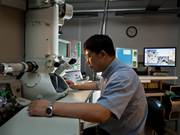
Using mathematical models, Norwegian research scientists and Scandinavian industry are working on tailoring alloys which will increase the usefulness of recycled aluminium. The objective of the five-year project is to develop technical production “recipes” which will enable aluminium scrap to re-emerge...
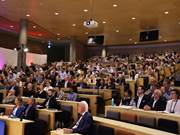
...capture, transport and storage (TCCS-13). Coinciding with the launch of the Norwegian full-scale CCS Longship project, the conference underscored the clear message that research is essential for turning climate ambition into action. 22 years of high-quality scientific presentations and discussions on CCS ...
800 tasks
Due to the way Li & Lim generated the test instances, the number of tasks in these instances are different and slightly higher than the nominal value. Here you find instance definitions and the best known solutions (to our knowledge) for the 800 tasks instances of Li & Lim's PDPTW benchmark problems...
Wastewater fertilisers to the aid of farmers

The circular economy can boost profits in the water management sector, and at the same time provide farmers both in Norway and around the world with cheaper fertiliser. Nutrients contained in wastewater, such as phosphorous and nitrogen, can be put to good use as fertilisers. Municipal wastewater treatment...
Using open international standards and new technology will contribute substantially to a sustainable development of the Norwegian construction industry. The board of Catenda AS (From the left: Founder of Catenda AS, Håvard Bell, Research Director at SINTEF Building and Infrastructure Kim Robert Lisø, Chairman...
Transforming waste into hydrogen

...with a fully carbon-negative approach. The role of biogas in reducing CO₂ emissions in the EU by 2050 is crucial, especially as demand from industry and the energy sector is expected to rise significantly. Therefore, prioritising biogas production through waste-to-hydrogen conversion is essential. Using...